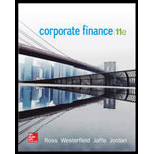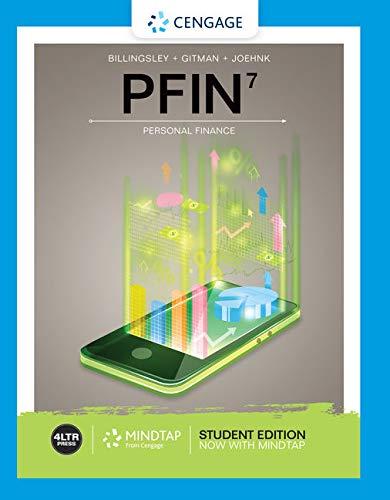
Concept explainers
Diversifiable and Nondiversifiable Risks In broad terms, why is some risk diversifiable? Why are some risks nondiversifiable? Does it follow that an investor can control the level of unsystematic risk in a portfolio, but not the level of systematic risk?
Systematic risk is essential for the complete market or segment. It is otherwise called market risk or undiversifiable risk that has an overall impact. This risk is unavoidable and not predictable. Here, hedging and appropriate strategy of asset allocation works out. While, mitigation with diversification is not possible.
Systematic risk states how one investment supports to the total aggregate risk of business’s financial funding.
Unsystematic risk is otherwise called the diversifiable, residual, non-systematic or specific risk. The proportion of a corporation’s total or aggregate risk which can be reduced through diversified asset portfolio.
Explanation of Solution
The investor can control risks using the following ways:
Yes, investors can control unsystematic risks. However, they cannot control systematic or market risks.
Diversifiable risks are unsystematic risks. Here, the total aggregate risk is decreased while using diversified asset portfolio. For example, oil spill and product liability of one manufacturer (in specific) can be reduced through diversification.
Systematic risks are non-avoidable and not diversifiable. They can be mitigated using diversification. These risks are unavoidable as it applies to complete segment. For example, Supreme Court decision (market related) and rise in interest rate is not avoidable. Also, this risk cannot be diversified.
Want to see more full solutions like this?
Chapter 11 Solutions
Corporate Finance (The Mcgraw-hill/Irwin Series in Finance, Insurance, and Real Estate)
 EBK CONTEMPORARY FINANCIAL MANAGEMENTFinanceISBN:9781337514835Author:MOYERPublisher:CENGAGE LEARNING - CONSIGNMENT
EBK CONTEMPORARY FINANCIAL MANAGEMENTFinanceISBN:9781337514835Author:MOYERPublisher:CENGAGE LEARNING - CONSIGNMENT Financial Reporting, Financial Statement Analysis...FinanceISBN:9781285190907Author:James M. Wahlen, Stephen P. Baginski, Mark BradshawPublisher:Cengage Learning
Financial Reporting, Financial Statement Analysis...FinanceISBN:9781285190907Author:James M. Wahlen, Stephen P. Baginski, Mark BradshawPublisher:Cengage Learning Intermediate Financial Management (MindTap Course...FinanceISBN:9781337395083Author:Eugene F. Brigham, Phillip R. DavesPublisher:Cengage Learning
Intermediate Financial Management (MindTap Course...FinanceISBN:9781337395083Author:Eugene F. Brigham, Phillip R. DavesPublisher:Cengage Learning Pfin (with Mindtap, 1 Term Printed Access Card) (...FinanceISBN:9780357033609Author:Randall Billingsley, Lawrence J. Gitman, Michael D. JoehnkPublisher:Cengage Learning
Pfin (with Mindtap, 1 Term Printed Access Card) (...FinanceISBN:9780357033609Author:Randall Billingsley, Lawrence J. Gitman, Michael D. JoehnkPublisher:Cengage Learning




